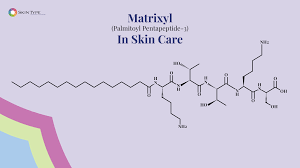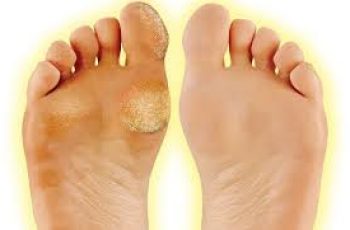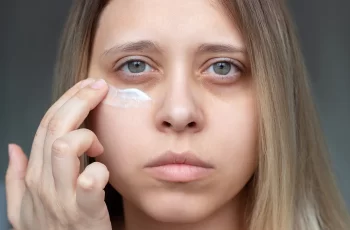
Matrixyl (KTTKS) in Skin Care
Matrixyl, also known as KTTKS), is a peptide in antiaging skin care serums and creams. It is extremely popular because of it’s skin smoothing effects but these are temporary. This blog discusses the uses, benefits and safety of Matrixyl and compares it to retinoids and another popular peptide Argiriline.
Is Matrixyl a better antiaging ingredient than exosomes, growth factors, and Vitamin C? Is it worth the money?
I am a dermatologist who specializes in skin care research. Lets review Matrixyl together.
What is Matrixyl?
Matrixyl is a skin care peptide marketed for anti-aging effects. It consists of the amino acids lysine, threonine, threonine, lysine, and serine attached to a fatty acid called palmitic acid. This combination is abbreviated Pal-KTTKS. The palmitic acid aims to help absorption into the skin.
Matrixyl 3000
Matrixyl 3000 is a mix of Palmitoyl Tripeptide-1 and Palmitoyl Tetrapeptide-7. It provides broader anti-aging benefits by stimulating not only collagen but also fibronectin production.
What does Matrixyl Do for Skin?
Matrixyl is primarily marketed for reducing the appearance of fine lines, wrinkles and improving skin firmness. It is added to various anti-aging creams, serums and lotions. Matrixyl aims to stimulate collagen production in the skin for a more youthful, smoother, and firmer skin.
How does matrixyl work?
Mechanism of Action
This popular peptide works by enhancing the activity of the growth factor TGF-β, which in turn promotes the synthesis of collagen and fibronectin. The aim is to reduce the appearance of fine lines and wrinkles by reinforcing the extracellular matrix and collagen infrastructure that are lost or reduced in aged skin.
How it works
TGF-beta stimulates cells to make more collagen. (Collagen is lost when skin ages.) Increased amounts of collagen make skin firmer, thicker, and smoother.
However, to work, the Matrixyl must pass through the epidermis to the dermis and be able to communicate with fibroblasts deep in the skin. Can it get this deep in the skin?
Does Matrixyl Work?
Does Matrixyl Work?
Matrixyl has a molecular weight of 802.05 Da, which restricts its ability to penetrate the skin effectively. The target cells for collagen production—fibroblasts—are located in the skin’s dermal layer, making it challenging for Matrixyl to exert its effect where it’s most needed.
Matrixyl’s size of 802 daltons exceeds the 500 dalton threshold believed to be required for penetrating the outermost skin layer known as the stratum corneum. Being unable to reach the dermal layer is a major obstacle to Matrixyl’s efficacy. The palmitic acid fatty acid added to this molecules aims to help absorption into the skin, but the size of Matrixyl prevents absorption into the dermal layers of the skin.
Instability
Like many peptides, Matrixyl tends to be unstable. They are susceptible to oxidation and react with other ingredients in the skin care product formulation. They can also potentially reducing efficacy of products in the skin care regimen.
It also has a very short shelf life due to instability so peptide products go bad very quickly. They are often combined with antioxidants to try to prevent this.
The Skin Tries Very Hard To Keep It Out
If a peptide is able to make it past the epidermis, it would still have to dodge a barrage of over 500 protease enzymes eager to break it down. Most topically applied peptides do not make it through the skin’s natural defense mechanisms.
Aggregation of peptides
High concentrations of peptides like Matrixyl may clump together, compromising emulsion stability. These clumps of peptides make skin penetration impossible and effect the texture and feel of the skin serum or cream. For this reason, low concentrations are usually used in skin care products reducing effectiveness.
Research on Matrixyl
Research Studies
In vitro studies (cell culture studies)-
Robust studies in human fibroblast cultures have demonstrated that Pal-KTTKS, the active component in Matrixyl, significantly increases collagen production. But penetration is not an issue when peptides are applied directly to cells in a culture dish.
In vivo studies (in live humans)-
Human studies have yielded mixed results. For example, a double-blind, placebo-controlled split-face study on 93 women showed a small but statistically insignificant improvement in fine lines and wrinkles after 12 weeks of Pal-KTTKS application. Statistical significance must be achieved in an evidence based study to say that a product really works.
There are no studies looking at the effects of these peptides on autophagy or cellular senescence.
It’s crucial to note that despite enticing abstracts and claims, there isn’t a peer-reviewed study that conclusively proves Matrixyl’s efficacy in reducing facial wrinkles. The research is often misrepresented by marketing claims, which can mislead both consumers and healthcare providers.
Is Matrixyl safe?
Safety and Side Effects
Matrixyl is generally considered safe for topical use at prescribed concentrations. No serious side effects have been reported. Minor skin irritation is possible if concentration exceeds recommended levels.
As a large peptide, systemic absorption of Matrixyl through the skin is typically minimal. While palmitic acid enhances penetration, the amount entering circulation is likely insignificant.
The EWG gives Palmitoyl Pentapeptide 3 a score of a 1 (very safe).
The CIR also reported that Matrixyl was safe. (3)
Best Matrixyl Products
We prefer products that have antioxidants and other antiaging ingredients mixed in with the Matrixyl peptides to help improve stability and effectiveness. Never use these before a Vitamin C serum or other facial serum because they will prevent absorption of the serum that goes after the peptide product.
Other names for matrixyl
Other names for Matrixyl
Here are some other names for Palmitoyl Pentapeptide-3:
Palmitoyl Oligopeptide – Palmitoyl pentapeptide-3 was previously referred to as palmitoyl oligopeptide, but this broad term is no longer allowed.
Matrixyl 3000 – This was an early trade name used for palmitoyl pentapeptide-3 by the company Sederma.
Palmitoyl pentapeptide – This is a shortened general name without the 3 subscript.
Pal-GHK – This refers to palmitic acid bound to the peptide glycine-histidine-lysine.
Palmitoyl pentapeptide-GHK – The full scientific name specifying the amino acid sequence.
Liposomyl tetrapetide – An alternate trade name used by some cosmetic brands.
In summary, the most common names are:
Palmitoyl Pentapeptide-3
Matrixyl 3000
Palmitoyl Oligopeptide (outdated)
The underlying peptide sequence is Glycine-Histidine-Lysine, with palmitic acid attached to enable skin penetration.
Matrixyl vs Argiriline
Like Matrixyl, Argiriline is a peptide marketed for reducing facial wrinkles. However, Argiriline works by inhibiting SNARE complex formation, which temporarily limits muscle contraction. The producers claim that provides a ‘Botox-like’ effect reducing expression lines. (However, Argiriline would have to penetrate ll the way to the muscle cells to achieve this.)
Matrixyl aims to work deeper in the skin by stimulating dermal collagen production. However, given Matrixyl’s limited penetration, it likely does not reach muscles to impact SNARE proteins. Argiriline also faces absorption challenges being 1,002 Daltons in size.
Overall, Matrixyl and Argiriline work via different mechanisms but both suffer from skin penetration issues. More research is required to substantiate their anti-wrinkle claims, especially compared to topical agents like retinoids, growth factors, and exosomes.
Matrixyl vs Retinol
Matrixyl vs Retinol
In contrast to Matrixyl, retinoids like retinol readily penetrate through the stratum corneum into the epidermal and dermal layers. Once in the skin, retinoids bind to receptors that stimulate gene expression, promoting collagen synthesis and inhibiting collagen breakdown.
Many rigorous clinical studies demonstrate retinoids like tretinoin and tazarotene effectively reduce fine lines, wrinkles, photodamage and skin roughness. Retinoid therapy reverses signs of aging at the cellular level.
With evidence for efficacy and skin penetration, retinoids remain the gold standard topical anti-aging treatment. More research is needed for Matrixyl to be considered in the same league as retinoids.
Why are peptides popular?
Why are Peptides so Popular?
Peptides temporarily coat the skin’s surface making it look instantly smoother, This makes these very loved ingredients even if they are unproven to have an y long term effect.
Skin Care Routine with Matrixyl
Just as with every other ingredient-it is important to match to your Baumann Skin Type and make sure that it increases the effectiveness of other skin care products in the skin care routine. With any peptide it is critical to make sure that every ingredient in the skin care routine is compatible.
Let me help you build a skin care routine. You will be able to choose products from many medical grade brands to create a custom skin care routine with my guidance.


